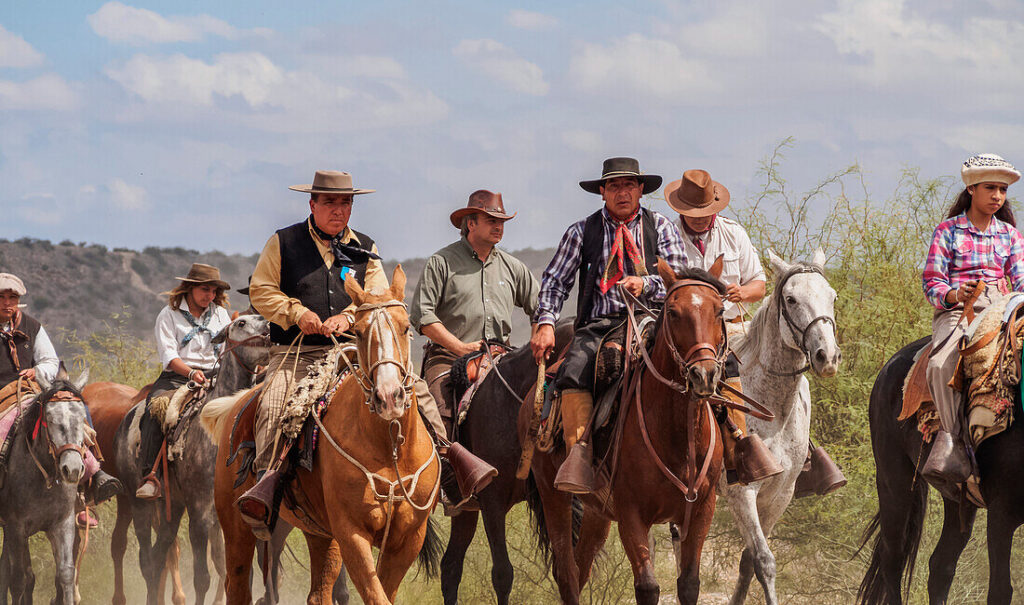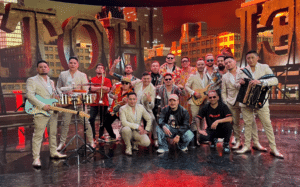Discovering the Rhythmic Soul of Argentina: The Story of Cumbia
Imagine yourself in the heart of Argentina, surrounded by the vibrant sounds of a genre that has captured the hearts of millions. Welcome to the world of Cumbia, a rhythm that is as diverse as the country itself. In this blog post, we’ll delve into the fascinating story of Cumbia in Argentina, exploring its origins, cultural significance, and the artists who have made it a household name.
What’s Cumbia?
Cumbia is a genre of Latin music that originated in Colombia and has since spread to become a beloved part of the musical landscape in many countries, including Argentina. At its core, Cumbia is characterized by its infectious rhythm, typically played with instruments like the accordion, drums, and wind instruments. The genre has a unique ability to bring people together, whether it’s on the dance floor or in the streets during festivals.
In Argentina, Cumbia has evolved into a distinct style known as Cumbia Argentina. This local version has incorporated elements from traditional Argentine music, such as tango and folklore, creating a unique sound that resonates deeply with the local population. The genre’s adaptability and ability to blend with other musical styles have made it a staple in Argentine culture.
The Cultural Meaning of Cumbia
Cumbia in Argentina is more than just music; it’s a cultural phenomenon. It has become a symbol of identity, particularly for the working-class communities where it originated. The genre often addresses themes of love, everyday life, and social issues, making it relatable to a wide audience.
One of the most interesting aspects of Cumbia in Argentina is its role in social movements. The music has been used as a tool for expression and resistance, particularly during times of political unrest. For example, during the economic crisis of 2001, Cumbia became a voice for the marginalized, giving people a way to express their struggles and hopes for the future.
Famous Artists Who Defined the Genre
Argentine Cumbia has been shaped by a number of talented artists who have contributed to its evolution. Here are some of the most famous names in the genre:
- Los Wawancó: Known for their energetic performances and catchy melodies, Los Wawancó are one of the most popular Cumbia bands in Argentina.
- Damas Gratis: With its unique “Teclado” style and lyrics, has brought a fresh perspective to the genre, attracting a new generation of fans.
- Los Palmeras: This band has been a major influence in the development of Cumbia in Argentina, blending rhythms with the “accordion” and modern sounds.
Different Types of Cumbia
Like any musical genre, Cumbia has evolved over the years, leading to the creation of various subgenres. Here’s a breakdown of some of the most popular types of Cumbia in Argentina:
Type of Cumbia | Description | Example Artists |
Cumbia Villera | A raw, gritty style that originated in the urban neighborhoods of Buenos Aires. | Damas Gratis, Pibes Chorros, Yerba Brava |
Cumbia Santafesina | A slower, more melancholic version of Cumbia that hails from the province of Santa Fe. | Los Palmeras, Leo Mattioli, Grupo Trinidad |
Cumbia Pop | A more polished, commercial version of Cumbia that has gained widespread popularity. | Gilda, Rafaga, Los Charros, Antonio Rios |
Each of these subgenres offers a unique perspective on the Cumbia sound, showcasing the genre’s versatility and adaptability.
Conclusion
Cumbia in Argentina is more than just a musical genre; it’s a cultural movement that has captured the hearts of millions. From its origins in Colombia to its evolution in Argentina, Cumbia has become a symbol of identity and resilience. Whether you’re dancing to the rhythm of Cumbia Villera or singing along to the lyrics of La Pollera Amarilla, the music has a way of connecting people in a way that few other genres can.
If you’re ever in Argentina, make sure to experience Cumbia firsthand. Attend a live performance, visit one of the many festivals, or simply listen to the music playing in the streets. It’s an experience you won’t soon forget.
So, the next time you hear the familiar rhythm of Cumbia, remember the rich history and cultural significance behind it. Who knows? You might just find yourself becoming a fan of this incredible genre.






